Bodybuilding
List of FDA-Approved Peptides
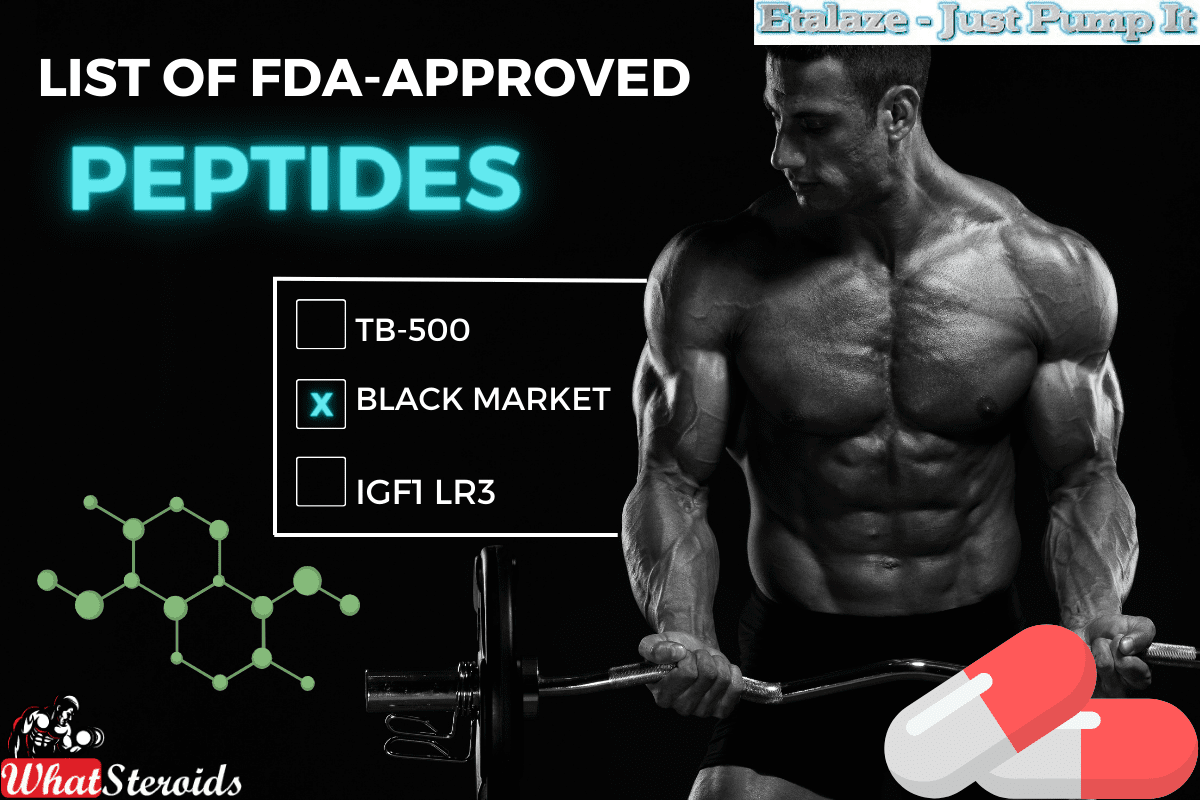
When it comes to bodybuilding, peptides have gained significant attention for their potential benefits in muscle growth and performance enhancement. However, it is crucial to prioritize safety and legality in the pursuit of achieving desired results.
Related Article: Best Post Cycle Therapy (PCT): 100% Recovery Within 6 Weeks
Why Peptides?
Bodybuilders use peptides for various reasons, including:
Muscle Growth
Some peptides, like growth hormone-releasing peptides (GHRPs) and growth hormone secretagogues (GHSs), are believed to stimulate muscle growth and repair, which can aid in muscle building.
Fat Loss
Certain peptides, such as melanotan II and peptide YY, are thought to promote fat loss by increasing metabolism or reducing appetite.
Recovery
Peptides like BPC-157 and TB-500 are believed to enhance recovery by promoting tissue repair and reducing inflammation, potentially allowing for more frequent and intense workouts.
Endurance
Some peptides, such as erythropoietin (EPO) mimetics, are thought to increase red blood cell production, leading to improved endurance and performance during workouts.
Injury Prevention
Peptides like collagen peptides are believed to support joint and connective tissue health, potentially reducing the risk of injuries associated with intense training.
In this section, we will provide you with a list of FDA-approved peptides that are commonly used by bodybuilders.
Growth Hormone Releasing Peptides (GHRPs)
GHRPs stimulate the release of growth hormone, promoting muscle growth and recovery. FDA-approved GHRPs include: - Tesamorelin (Egrifta) - Sermorelin (Geref)
Growth Hormone Secretagogues (GHSs)
GHSs also stimulate the release of growth hormone and offer potential benefits for bodybuilders. An FDA-approved GHS is: - Macimorelin (Macrilen)
Insulin-like Growth Factor-1 (IGF-1) Peptides
IGF-1 plays a vital role in muscle development and repair. One FDA-approved IGF-1 peptide is: - Mecasermin rinfabate (Increlex)
4. Gonadotropin-Releasing Hormone Analogs
These peptides regulate hormone levels in the body, impacting muscle growth and performance. An FDA-approved analog is: - Leuprolide acetate (Lupron Depot) Thank you for providing information on various growth hormone-related peptides and analogs.
Tesamorelin (Egrifta)
Tesamorelin is a growth hormone-releasing peptide that has been approved by the FDA for the treatment of HIV-associated lipodystrophy. It stimulates the release of growth hormone, which can promote muscle growth and aid in recovery.
Sermorelin (Geref)
Sermorelin is another FDA-approved growth hormone-releasing peptide that stimulates the production and release of growth hormone from the pituitary gland. It may be used to treat children with growth hormone deficiency or adults with low levels of growth hormone.
Macimorelin (Macrilen)
Macimorelin is a Growth Hormone Secretagogue (GHS) that received FDA approval for diagnosing Adult Growth Hormone Deficiency (AGHD). GHSs like macimorelin stimulate the release of growth hormones from the pituitary gland, aiding in muscle development.
4. Mecasermin rinfabate (Increlex)
Mecasermin rinfabate is an insulin-like Growth Factor-1 (IGF-1) peptide approved by the FDA for treating children with short stature due to severe primary IGF-1 deficiency or IGF-1 gene deletion mutations. IGF-1 plays a crucial role in promoting muscle development and repair.
Leuprolide acetate (Lupron Depot)
While not strictly categorized as a peptide, leuprolide acetate belongs to a class called Gonadotropin-Releasing Hormone Analogs, which regulate hormonal levels in both males and females by suppressing sex hormones such as testosterone or estrogen. This regulation can indirectly impact muscle growth and performance. It's important to note that these substances are only available under prescription and should always be used under the guidance of a healthcare professional.
It's important to note that while these peptides are FDA-approved for specific medical conditions, their off-label use for bodybuilding purposes may not be explicitly endorsed by regulatory authorities.
Before incorporating any peptide into your fitness regimen, it is crucial to consult with a healthcare professional who specializes in sports medicine or endocrinology to ensure safe usage and proper dosing.
Remember that achieving optimal results in bodybuilding requires a comprehensive approach involving proper nutrition, training, rest, and guidance from qualified professionals.
HGH Frag 176-191
This peptide is known for its fat-burning. It is specifically designed to target and break down fat cells, helping individuals achieve a leaner physique while preserving muscle mass.
TB-500
It is widely used for its ability to promote healing and recovery from injuries, making it a valuable asset for athletes engaged in intense training regimens.
Must Read: Horse Chestnut and Other Supplements to Get Rid of Water Retention
IGF1 LR3
This peptide stimulates muscle cell growth, leading to increased muscle mass and improved recovery time.
The peptide works as a protein hormone and contains a very unique chemical structure.
Additionally, LR3 it is the same as a natural insulin hormone (IGF-1) found in the liver and pancreas.
This makes it good in stimulating several natural processes such cellular growth and differentiation. For this reason, it ranks among the highest for bodybuilders who want to grow muscle.
Again, IGF1 LR3 promotes the development of Growth Hormone (GH).
Growth hormone (GH) is needed for muscle growth and development but it is usually less abundant with age.
The peptide is a synthetic (long-form) version and is mostly more potent than the standard Insulin-like Growth Factor (IGF-1).
However, most experts are of the opinion that it's not as powerful as Human Growth Hormone (HGH) supplements.
Overall, IGF1 LR3 does not come withe nasty side effects and long-term health risks compared to most performance-enhancing substances.
GHRP-6
Known for its appetite-stimulating effects, GHRP-6 also boosts growth hormone secretion, promoting muscle growth and aiding in recovery.
Melanotan II
While not directly related to muscle growth, Melanotan II is often used by bodybuilders for its tanning effects, giving them a more defined appearance on stage.
Why the FDA Takes Longer to Approve Peptides
The FDA's approval process for peptides used by bodybuilders involves ensuring safety and efficacy. Peptides, often used for muscle building, can carry risks such as side effects and long-term health consequences. Therefore, comprehensive studies on their safety, dosage, and effectiveness are required.
Many peptides used by bodybuilders may lack sufficient research or have potential adverse effects, leading to their non-approval. Additionally, some peptides may be considered performance-enhancing drugs, raising concerns about fair competition and ethical use in sports. Overall, the FDA prioritizes public health and safety in its approval process, which may limit the approval of peptides for bodybuilding purposes.
Let's delve deeper into why the FDA doesn't readily approve most peptides for bodybuilding:
Safety Concerns
Peptides can affect various bodily processes and systems. The FDA requires thorough testing to ensure they don't pose significant risks to users. This includes assessing potential side effects, interactions with other substances, and any long-term health implications.
Efficacy and Dosage
To gain FDA approval, a substance must demonstrate not only safety but also effectiveness for its intended use. This requires extensive clinical trials to establish the optimal dosage, duration of use, and expected outcomes. Many peptides used by bodybuilders may lack sufficient data on these parameters.
Regulatory Compliance
Peptides marketed for bodybuilding often fall into a regulatory gray area. If they're marketed as supplements rather than drugs, they may not undergo the same rigorous testing and oversight as pharmaceuticals. However, the FDA still expects manufacturers to comply with regulations regarding labeling, advertising claims, and quality control.
Ethical and Legal Considerations
Some peptides used by bodybuilders may be considered performance-enhancing drugs, especially if they provide an unfair advantage in sports competitions. The FDA must consider the ethical implications of approving substances that could potentially undermine fair play and jeopardize athlete health.
Limited Research
Peptides used in bodybuilding may not have undergone sufficient scientific scrutiny. Many are relatively new compounds with limited research on their safety and efficacy, making it challenging for the FDA to evaluate their benefits and risks accurately.
Off-Label Use
Even if a peptide is FDA-approved for certain medical conditions, using it off-label for bodybuilding purposes may not be supported by sufficient evidence. The FDA encourages healthcare providers and consumers to use approved drugs only for their intended purposes to ensure safety and effectiveness.
In summary, the FDA's cautious approach to approving peptides for bodybuilding reflects its commitment to protecting public health and promoting evidence-based medicine. While some peptides may eventually receive FDA approval for specific uses, rigorous scientific research and regulatory oversight are essential to ensure their safety and efficacy.
Overall
When it comes to finding FDA-approved peptides for bodybuilding purposes, it is crucial to prioritize safety and legality. While there are numerous online sources claiming to offer the best FDA-approved peptides, it is important to exercise caution and do thorough research before making a purchase.
One reliable option for obtaining FDA-approved peptides is through licensed pharmacies or medical professionals. These reputable sources ensure that the peptides they provide meet the necessary quality standards and comply with FDA regulations.
Another avenue worth exploring is reputable online peptide retailers that have established a strong reputation in the industry. It is essential to look for websites that clearly state their commitment to providing FDA-approved peptides and have positive customer reviews attesting to their legitimacy.
It's important to note that purchasing peptides for bodybuilding purposes may require a prescription, depending on your location and specific regulations. Consulting with a healthcare professional or an expert in the field can provide valuable guidance on where to safely obtain FDA-approved peptides tailored to your needs.
Visit etalaze.to today and get the best offer on various peptides and supplements.
Don't Miss: YouTube Fitness Influencers to Subscribe to Right Now
Bodybuilding
Mastering Bodybuilding in 2025: Top Fitness Tips for Success

Bodybuilding is more than just a sport; it's a lifestyle that requires dedication, discipline, and a thorough understanding of fitness principles. As the world of fitness continues to evolve, bodybuilders must stay updated with the latest trends, techniques, and scientific advancements to achieve their goals. In 2025, several innovative approaches are redefining bodybuilding. Here are essential fitness tips for bodybuilders to excel this year.
Read More: Bodybuilder Winter Clothing: Staying Warm and Stylish
Embrace Technology-Driven Workouts
In 2025, technology plays a significant role in bodybuilding. Wearable devices, fitness apps, and virtual reality (VR) training are now integral components of an effective workout regimen.
Wearable Devices
Modern wearables track everything from heart rate and sleep patterns to muscle activation and caloric expenditure. Utilize these devices to monitor your progress and make data-driven adjustments to your training and nutrition plans.
Fitness Apps
Leverage fitness apps for customized workout plans, progress tracking, and virtual coaching. Many apps now incorporate artificial intelligence to provide personalized feedback and recommendations.
Virtual Reality Training
VR technology offers immersive workout experiences, allowing bodybuilders to simulate different training environments and scenarios. This can enhance motivation and add variety to your routine.
Focus on Functional Strength
While hypertrophy (muscle growth) remains a primary goal, functional strength is gaining importance. Functional strength training improves overall performance, reduces the risk of injury, and enhances daily activities.
 Check Out Our1 4 Weeks Quality Strength & Lean Muscles
Check Out Our1 4 Weeks Quality Strength & Lean Muscles
Compound Movements
Incorporate compound exercises like squats, deadlifts, and bench presses. These movements engage multiple muscle groups and joints, promoting balanced strength development.
Core Stability
Prioritize exercises that strengthen the core, such as planks, Russian twists, and leg raises. A strong core supports better lifting mechanics and reduces the risk of lower back injuries.
Optimize Nutrition for Muscle Growth and Recovery
Nutrition is the cornerstone of successful bodybuilding. In 2025, the focus is on personalized nutrition plans tailored to individual needs and goals.
Protein Intake
Ensure adequate protein intake to support muscle repair and growth. Aim for 1.6 to 2.2 grams of protein per kilogram of body weight per day, depending on your training intensity and goals.
 Click Here to Buy SynthaTrope By SynthaPharma
Click Here to Buy SynthaTrope By SynthaPharma
Nutrient Timing
Pay attention to nutrient timing to maximize muscle recovery and growth. Consume protein and carbohydrates within 30 minutes post-workout to replenish glycogen stores and kickstart muscle repair.
Supplements
Utilize supplements wisely. Creatine, branched-chain amino acids (BCAAs), and omega-3 fatty acids are popular choices for enhancing performance and recovery.
Prioritize Mental Health and Mindfulness
Mental health is increasingly recognized as a critical component of overall fitness. Incorporating mindfulness practices can improve focus, reduce stress, and enhance performance.
Meditation
Incorporate meditation into your daily routine to reduce stress and improve mental clarity. Mindfulness meditation can enhance your mind-muscle connection during workouts.
Visualization
Use visualization techniques to mentally rehearse your workouts. Visualizing successful lifts and achieving your goals can boost confidence and motivation.
Rest and Recovery
Prioritize rest and recovery to prevent burnout and overtraining. Ensure you get 7-9 hours of sleep per night and incorporate rest days into your training schedule.
Leverage Advanced Training Techniques
Advanced training techniques can help break through plateaus and stimulate muscle growth. In 2025, several methods are gaining popularity among bodybuilders.
Blood Flow Restriction (BFR) Training: BFR involves restricting blood flow to the muscles during low-intensity exercises. This technique can enhance muscle growth and strength without the need for heavy weights.
Eccentric Training: Focus on the eccentric (lowering) phase of exercises. Eccentric training can stimulate greater muscle damage and growth compared to traditional concentric movements.
Periodization: Implement periodization into your training plan. Varying the intensity, volume, and type of exercises can prevent plateaus and ensure continuous progress.
Incorporate Recovery and Mobility Work
Recovery and mobility are essential for preventing injuries and maintaining optimal performance. In 2025, bodybuilders are paying more attention to these aspects of training.
Foam Rolling and Myofascial Release: Use foam rollers and massage balls to release muscle tightness and improve flexibility. Regular myofascial release can reduce soreness and enhance recovery.
Stretching: Incorporate dynamic stretching before workouts and static stretching after workouts. Stretching improves range of motion and prevents muscle imbalances.
Cryotherapy and Hydrotherapy: Explore recovery techniques like cryotherapy (cold therapy) and hydrotherapy (water therapy) to reduce inflammation and accelerate muscle recovery.
Engage in Continuous Learning and Community Building
The fitness industry is constantly evolving, and staying informed is crucial for success. Engage in continuous learning and connect with the bodybuilding community for support and motivation.
Educational Resources: Read books, watch videos, and attend seminars to stay updated on the latest research and trends in bodybuilding.
Community Engagement: Join online forums, social media groups, and local bodybuilding clubs. Sharing experiences and knowledge with fellow bodybuilders can provide valuable insights and encouragement.
Professional Guidance: Consider working with a certified personal trainer or coach. Professional guidance can help you optimize your training and nutrition plans, ensuring you're on the right track.
With your FB Plus subscription or active FB Plus Pass, you now have access to 124 weeks of our most popular workout programs, which typically sell for $10-$30 each. Additionally, our popular 4-week Meal Plan is included. This is on top of the 38 Challenges and Programs that are already available to Plus members.
We've also introduced a new feature that many of you have requested. To assist you in choosing your next program, you can now preview each day of any program from its detail view. This feature lets you see all the included workout videos and content before you schedule it, ensuring you know exactly what to expect.
Conclusion
In 2025, bodybuilding is more than just lifting weights; it's a holistic approach to fitness that encompasses technology, nutrition, mental health, and advanced training techniques. By embracing these fitness tips, bodybuilders can achieve their goals, stay injury-free, and enjoy a fulfilling fitness journey. Remember, consistency and dedication are key to success in bodybuilding. Stay committed, keep learning, and most importantly, have fun on your path to becoming the best version of yourself.
Bodybuilding
Top Video Games for Bodybuilders in 2025

There are several video games that can be great for bodybuilders, combining fitness and fun! Here are some of the best options:
Ring Fit Adventure (Nintendo Switch)
The game uses the Ring-Con and Leg Strap to guide you through various exercises and adventures. It's a fun way to get a full-body workout while playing a game.
Fitness Boxing 2: VR Boxing Remastered (PlayStation VR)
It offers a full-body boxing workout with a variety of punches and combos. It's a great way to improve your fitness while enjoying a virtual boxing experience.
Must Read: Marvel-Inspired Training Clothing on Amazon
Just Dance 2024
This popular dance game gets you moving to the beat with a variety of songs and dance routines. It's a fun way to burn calories and improve your coordination.
Zumba Fitness
Burn It Off (Nintendo Wii): This game offers a fun and energetic Zumba workout, perfect for those who enjoy dancing and want to get a good cardio workout.
Yoga for Beginners
If you're looking for a more relaxing workout, yoga games can help improve flexibility and reduce stress. Many of these games offer guided yoga sessions that you can follow along with.
Gym Tycoon
This game lets you build and manage your own gym, complete with various workout equipment and fitness classes. It's a great way to learn about different exercises and how to create effective workout routines.
The Sims 4: Fitness Stuff Pack
This expansion pack for The Sims 4 adds fitness equipment and activities to the game, allowing you to improve your character's fitness and join the athlete career.
Grand Theft Auto: San Andreas
While not a traditional fitness game, this classic game includes bodybuilding activities that can help your character gain muscle and improve fitness.
Knockout Home Fitness (Nintendo Switch)
This game offers a variety of boxing workouts that can help improve your strength and endurance.
Gym Simulator 24 (PC)
In this simulation game, you can build and manage your own fitness empire, creating workout routines and managing gym equipment.
Let's Get Fit (Nintendo Switch)
This game focuses on pure workouts, allowing you to set programs and follow along with digital trainers for a customized fitness experience.
Beat Saber (VR)
A popular VR game where you slash blocks to the beat of the music, providing an intense full-body workout.
Synth Riders (PlayStation VR)
This game combines freestyle dance and fitness, offering high-tempo tracks and multiplayer modes for a fun and energetic workout.
Yoga Master (PlayStation)
Designed by professional yoga coaches, this game offers a variety of yoga lessons and poses to improve flexibility and reduce stress.
Les Mills Bodycombat (PlayStation VR)
A martial arts-inspired workout game with a range of workout plans and coaching to keep you motivated.
OhShape Ultimate (PlayStation VR)
This game provides a full-body cardio workout with six sessions and two difficulty levels, designed to engage every part of your body.
These games offer a mix of cardio, strength, and flexibility workouts, making them great additions to your fitness routine.
Related Article: Supplemental Breast Milk for Bodybuilders
Bodybuilding
2nd Edition of Natural Bodybuilding Competition Facts
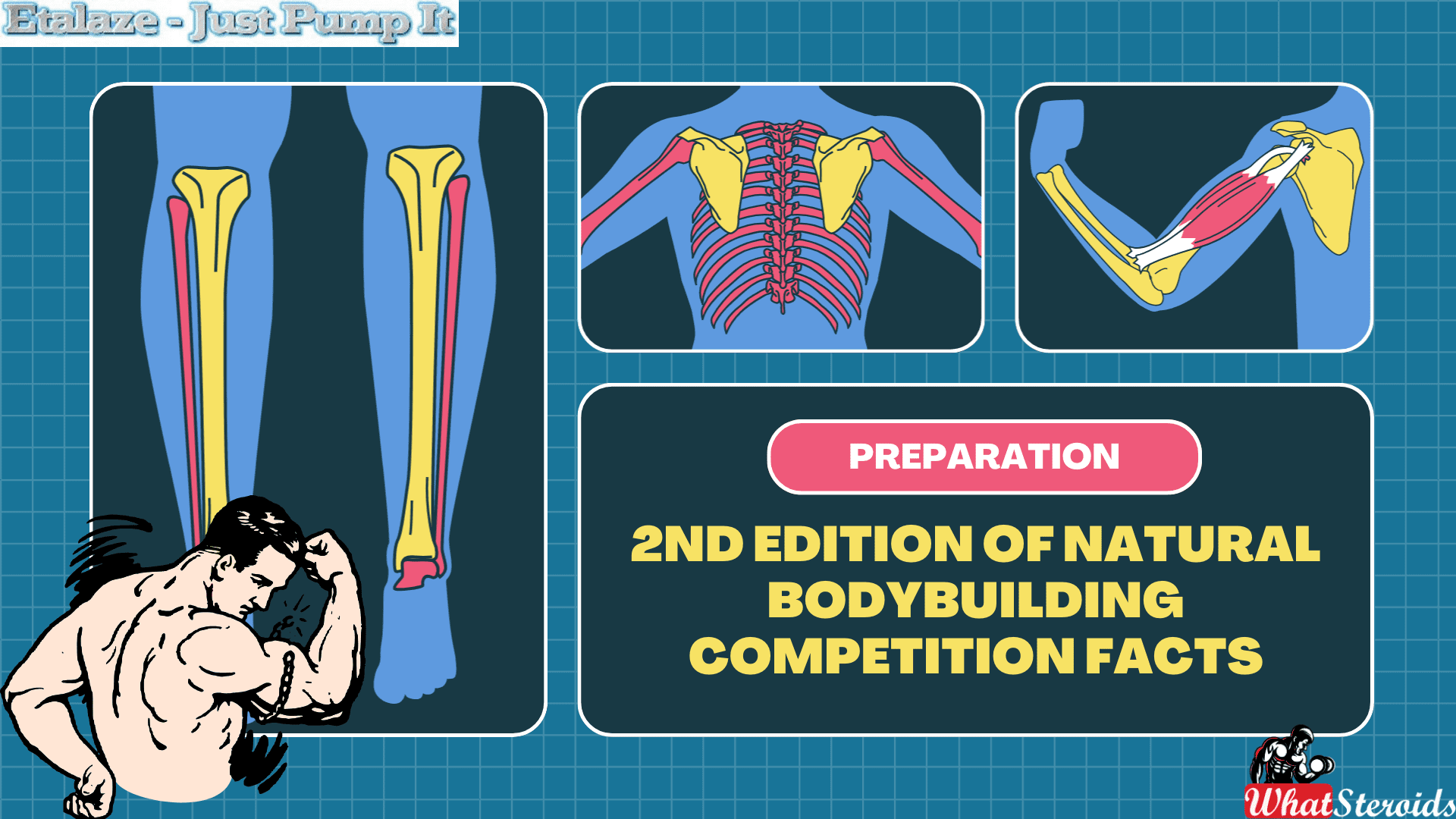
Natural bodybuilding competitions are designed to promote and celebrate athletes who build their physiques without the use of performance-enhancing drugs. These events emphasize fair play, health, and the natural development of muscle mass and definition.
The second edition of natural bodybuilding competitions has gained momentum globally, particularly focusing on drug-free athletes. These competitions are hosted by various organizations like the INBA/PNBA (International Natural Bodybuilding Association/Professional Natural Bodybuilding Association) and OCB (Organization of Competitive Bodybuilders).
In 2024, several notable events have been planned, including the INBA Natural Universe and INBA World Cup, both of which emphasize natural bodybuilding through rigorous drug testing policies. These events aim to showcase competitors who adhere to strict drug-free protocols, and winners often earn pro cards allowing them to compete in higher-level professional competitions.
These competitions focus on categories like men's bodybuilding, classic physique, and women's figure and bikini, among others. Athletes undergo polygraph and urine tests to ensure compliance with natural bodybuilding standards. The winners often receive medals, trophies, or pro status
-

 Steroids2 years ago
Steroids2 years agoVOX Testing: Why Bodybuilders Must Have It Tested Regularly
-

 Steroids2 years ago
Steroids2 years agoShavers and Other Body Grooming Equipment for Bodybuilders In 2023
-

 Steroids2 years ago
Steroids2 years agoChatGPT and Other Avenues to Find Great Bodybuilding Coaches
-

 Steroids2 years ago
Steroids2 years agoBest Oil Recommendations Before Competition for Subtle Shimmer
-

 Steroids2 years ago
Steroids2 years agoPowerlifting Vs Power Building: Find Out the Big Difference and When to Shift Between the Two
-

 Anabolic Steroids1 year ago
Anabolic Steroids1 year agoLegality of Anabolic Steroids In Latin America
-

 Nutrition1 year ago
Nutrition1 year agoEverything Nutritional Food: What’s Too Much Or Too Little
-

 Beginners2 years ago
Beginners2 years agoTren Cycle for Beginners
-

 Bodybuilding Products12 months ago
Bodybuilding Products12 months agoTelmisartan In Bodybuilding: An Expert’s Advice
-

 Bodybuilding2 years ago
Bodybuilding2 years agoCompetition Prep Cycle for Pro Bodybuilders
-

 Anabolic Steroids10 months ago
Anabolic Steroids10 months agoHow Much Do You Know About B-AET? A Fat Burner You’ve Been Missing
-

 Bodybuilding1 year ago
Bodybuilding1 year agoChia Seeds in A Bodybuilder’s Diet: An Expert’s Advice
-

 Product Reviews10 months ago
Product Reviews10 months agoTop Vitamins for Skin Health
-

 Steroids11 months ago
Steroids11 months agoAnadrol Cycle: Benefits, Doses, Alternatives, etc.
-

 Bodybuilding7 months ago
Bodybuilding7 months agoPrimal Movements: Our Ultimate Guide for Maximum Results
-

 Anabolic Steroids8 months ago
Anabolic Steroids8 months agoJoint Stiffness: How to Manage It While on AAS
-

 Steroids10 months ago
Steroids10 months agoMajor Bodybuilding Peptides Explained
-

 Bodybuilding9 months ago
Bodybuilding9 months agoHormone Replacement Therapy (TRT) Cycle Guide
-

 Steroids9 months ago
Steroids9 months agoOmnitope (Oxytocin)
-

 Bodybuilding1 year ago
Bodybuilding1 year agoHow Much Is Too Much Cardio? Understanding Heart Rate Zones
-

 Anabolic Steroids1 year ago
Anabolic Steroids1 year agoStart The New Year Strong With These Tips
-
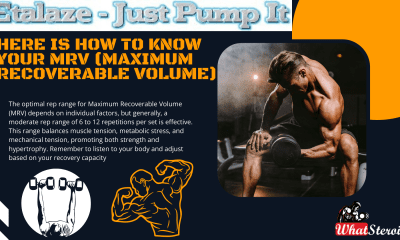
 Bodybuilding10 months ago
Bodybuilding10 months agoHere Is How To know Your MRV (Maximum Recoverable Volume)
-

 Steroids1 year ago
Steroids1 year agoTrenbolone: Why it Remains A Beast In the Market
-

 Bodybuilding7 months ago
Bodybuilding7 months agoHow Effective is Bone Broth for Recovery?
-
Anabolic Steroids1 year ago
Natural Steroids for Bodybuilding


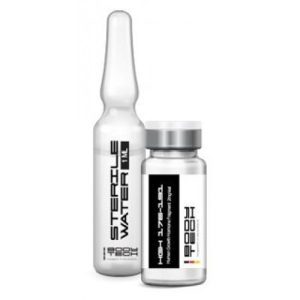
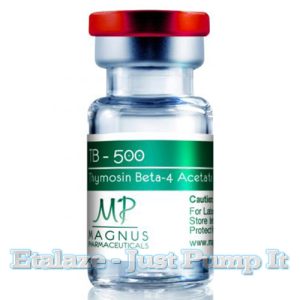
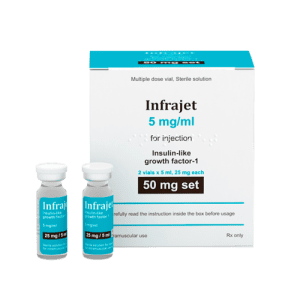 Buy Now
Buy Now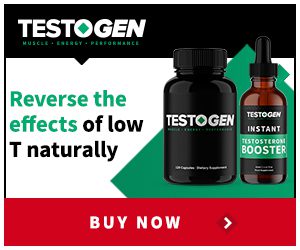





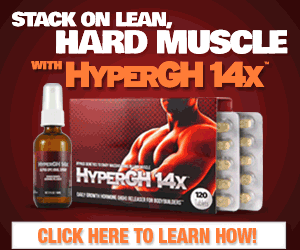
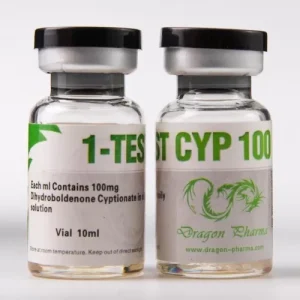 Click here to buy 1-Test Cyp/DHB 100 by Dragon Pharma
Click here to buy 1-Test Cyp/DHB 100 by Dragon Pharma









